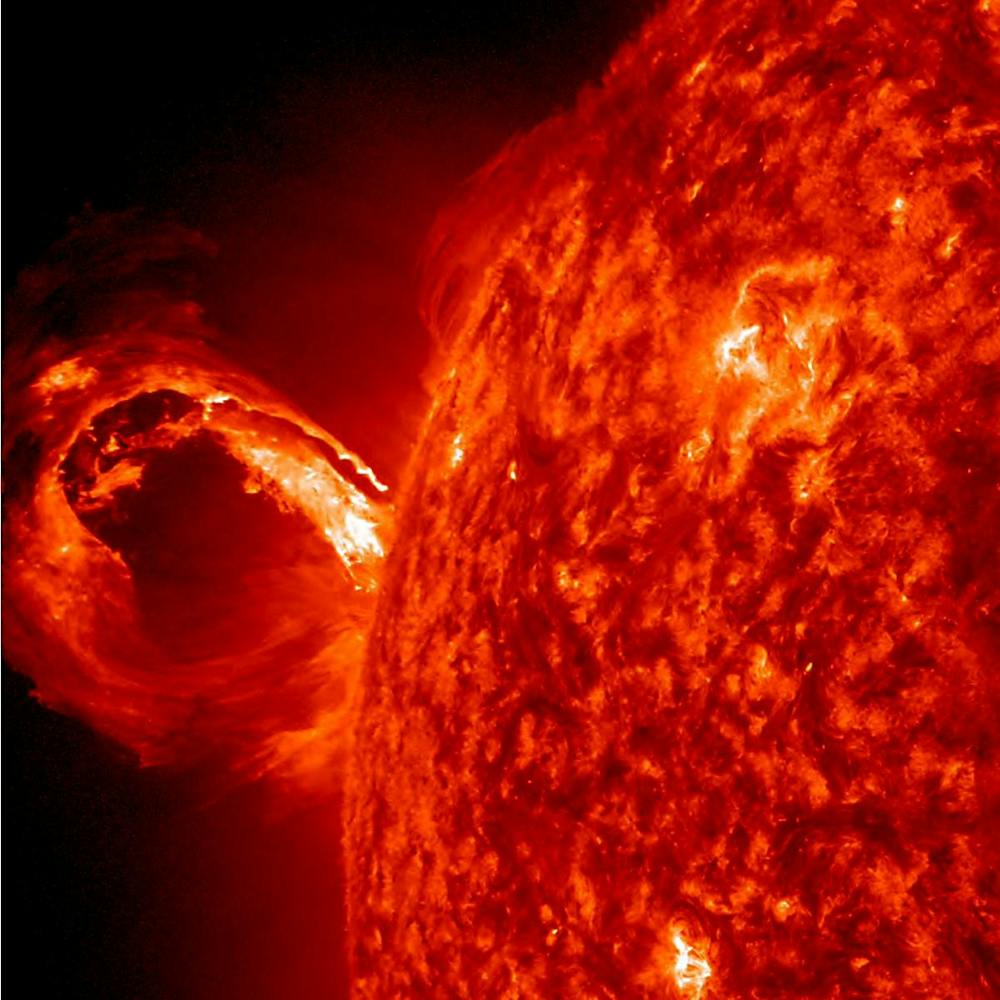Stephen Majeski, a graduate student in the Princeton Plasma Physics Laboratory, and Professor Hantao Ji, a professor in the astrophysics department, have made a new discovery that allows them to detect potential coronal mass ejections and learn more about their behaviors to prevent them before they reach Earth. Their research takes a novel, analytical approach to understanding plasmoid behavior — a tedious yet effective task due to the variance of plasmoid occurrence.
A plasmoid is a “cylindrical tube [of plasma] embedded in … a current sheet or magnetic field,” Majeski said in an interview with The Daily Princetonian.
“Magnetic field lines, they have tension,” Majeski explained. “Sort of how if you pull a string tight and you flick it, it’s going to bounce back and forth. If you were to twist up a rubber band a bunch and let go, it’d unravel. But it’ll do that kind of slowly.”
Magnetic field lines unraveling is a process more commonly referred to as diffusion. When the lines diffuse, they can reach earth and, along with plasma, cause devastating effects on our electrical systems and power sources. “It’s like knowing how big of a bullet was just fired at earth,” Majeski noted about his work.
In their research, Majeski and Ji created a model as a way to measure the effects caused by small and large plasmoids alike, as well as the differences between groups of plasmoids. According to Majeski, this is difficult to accomplish, given that every scenario of plasmoids is different because every possible position of the sun from which they could emerge is distinct.
Ji used an analogy involving the different heights of human beings to help explain the reason for wanting to be able to calculate the effects of a range of plasmoid sizes — not just a single one. “You have people that are very tall and people that are very short, but the average is just one [height]. Spreading is also important, not just the average,” he said.
He explained that their research makes use of a newly discovered process emulating a faster derivative of a well-known activity called reconnection.
“The basic idea of reconnection is you have one pair of scissors with your rope, and you can only cut at one place at a time,” Majeski added. “But we were looking at this version of reconnection called plasmoid reconnection. If there were 20 people working on the same tangle and they all had scissors, they could cut [the magnetic field] up … and glue it back together … It’s a way to speed up the process.”

Majeski states that scientists have predicted that cutting with “one pair of scissors” is a process that would take a very long time. But solar flares can occur within just 15 minutes. This means that there is a missing step between our understanding of reconnection in plasmoids and how they actually work.
Majeski’s work offers an analytical explanation that helps confirm the concept of plasmoid reconnection by showing that it is feasible that a variety of plasmoids could all be cutting a spot of the magnetic field line at the same time. This would mean more hands on deck, and would enable a faster loosening and binding process.
Majeski, who was born in Princeton, worked on the project on his own at home after the COVID-19 pandemic hit, meeting instead with Ji on Zoom to discuss the math and analytics of the research. The researchers initially planned to build the experiment and simulate a related problem within the lab, creating a miniature version of these effects. Instead, he was able to construct a model that can be used to understand effects of a spread of plasmoids and not just address a single one, as a set-up experiment or computational analysis would.
Ji remarked that the work is “exciting”, yet he stated that he remains “nervous because nobody has done it.”

When asked about the possibility that other scientists would find that adjustments to the research would need to be made, Ji laughed and added, “If [the research] doesn’t work, we’ll go back to the drawing board.”
Mesonma Anwasi is a news contributor at the 'Prince.' She can be contacted at manwasi@princeton.edu.








